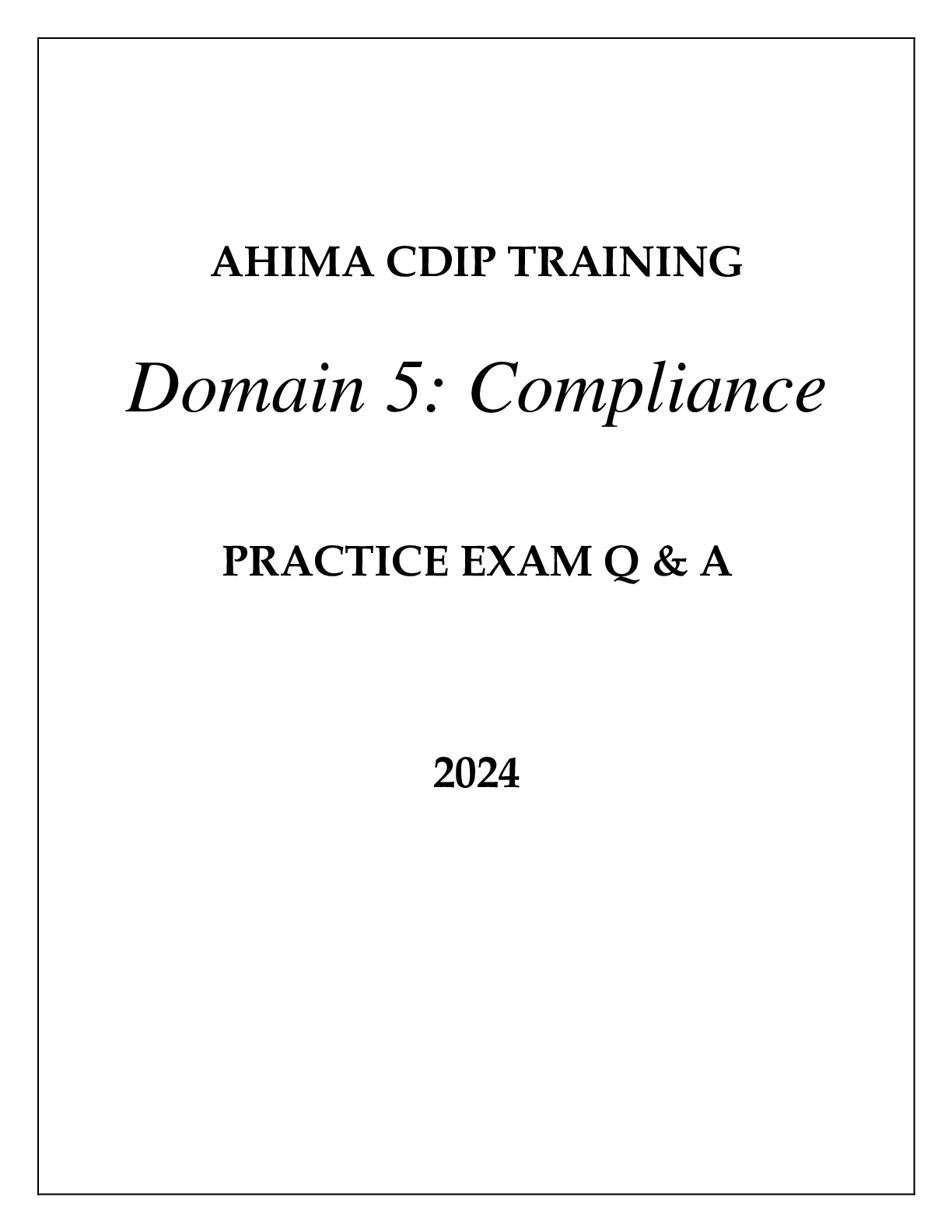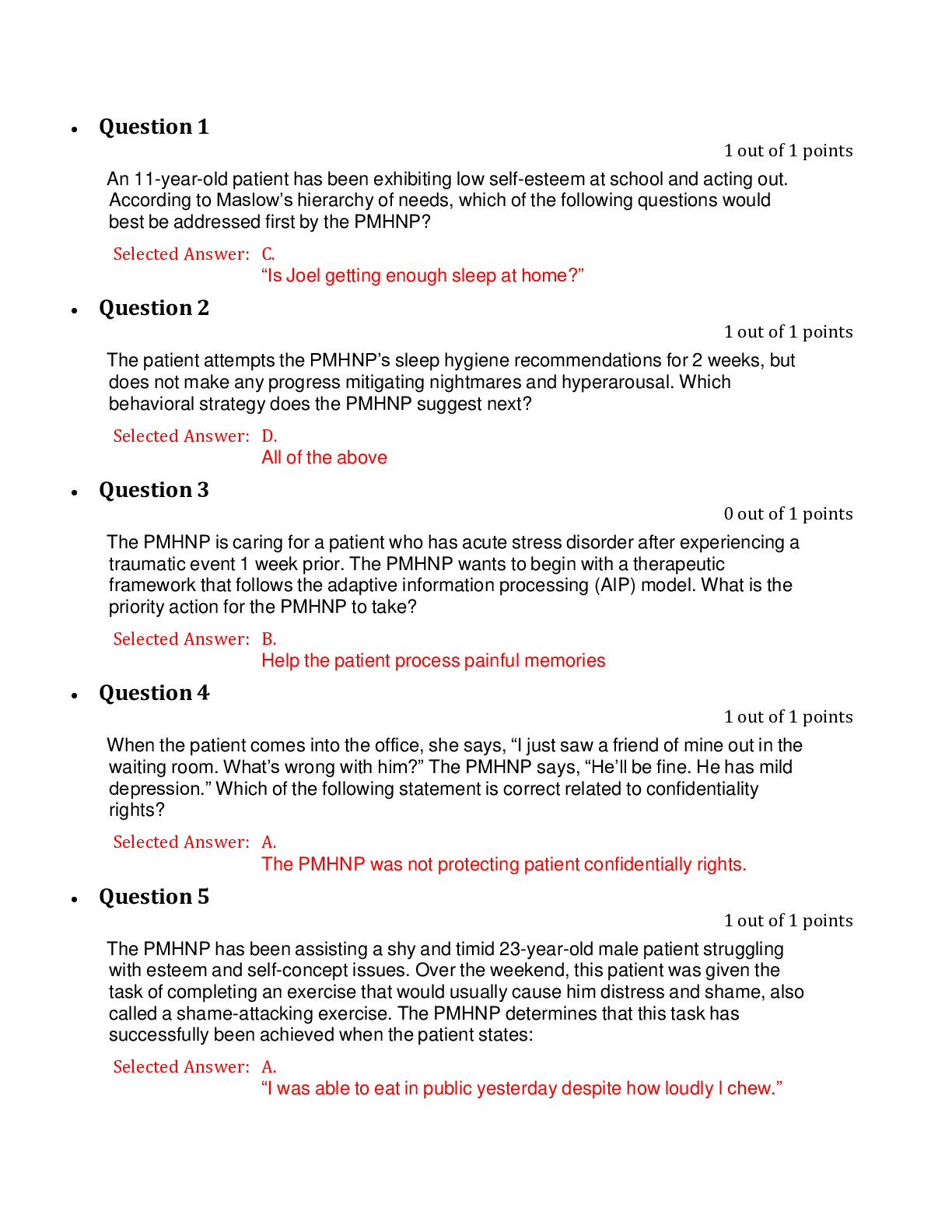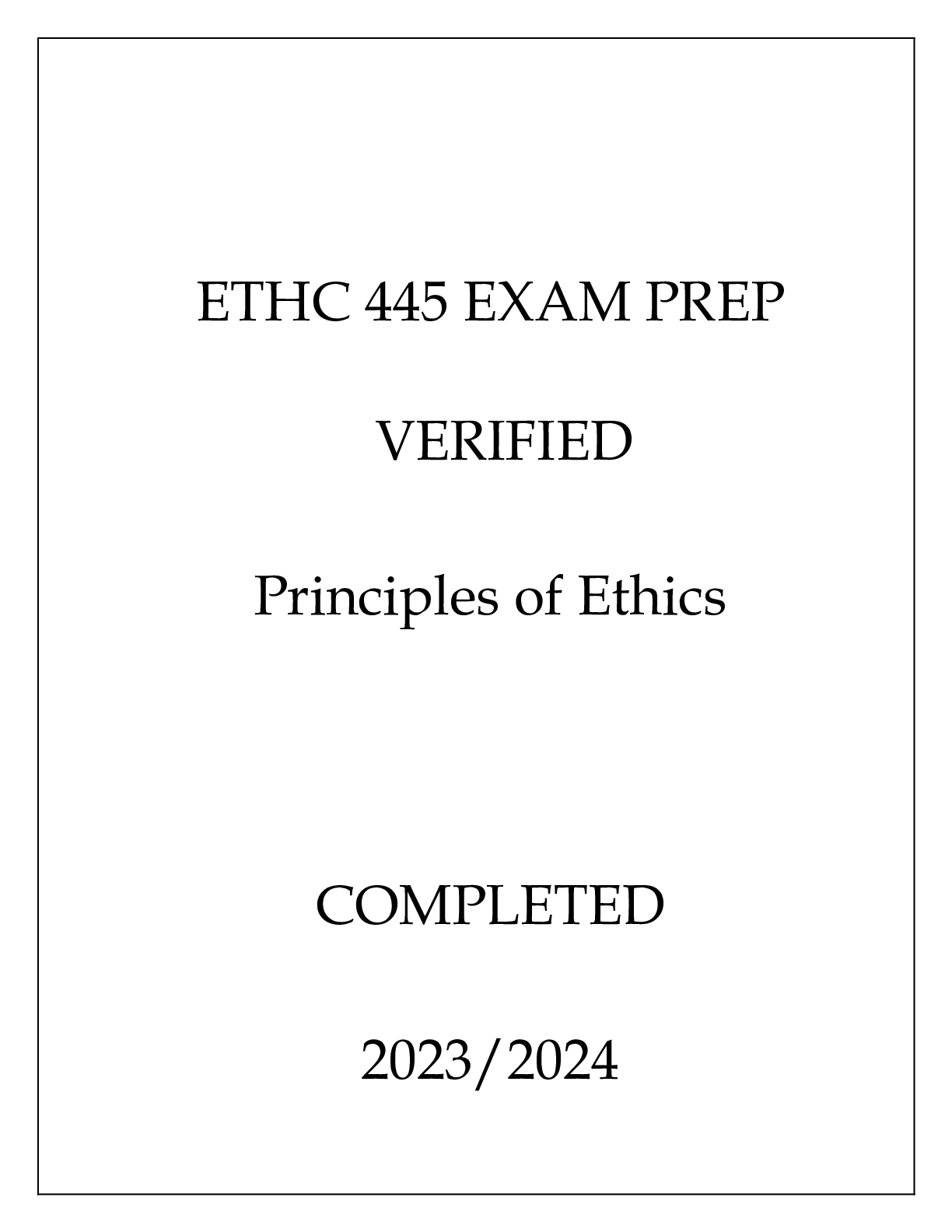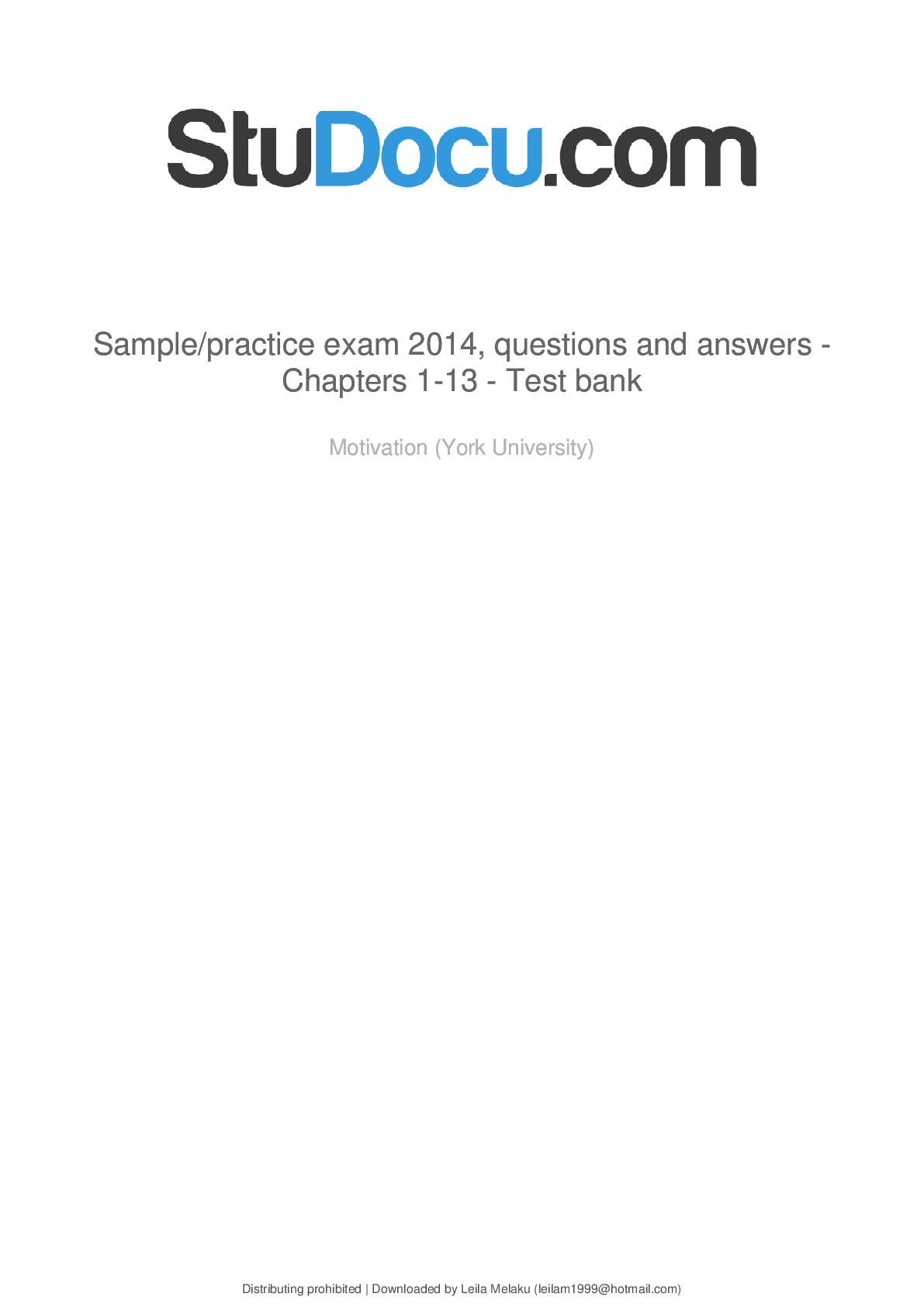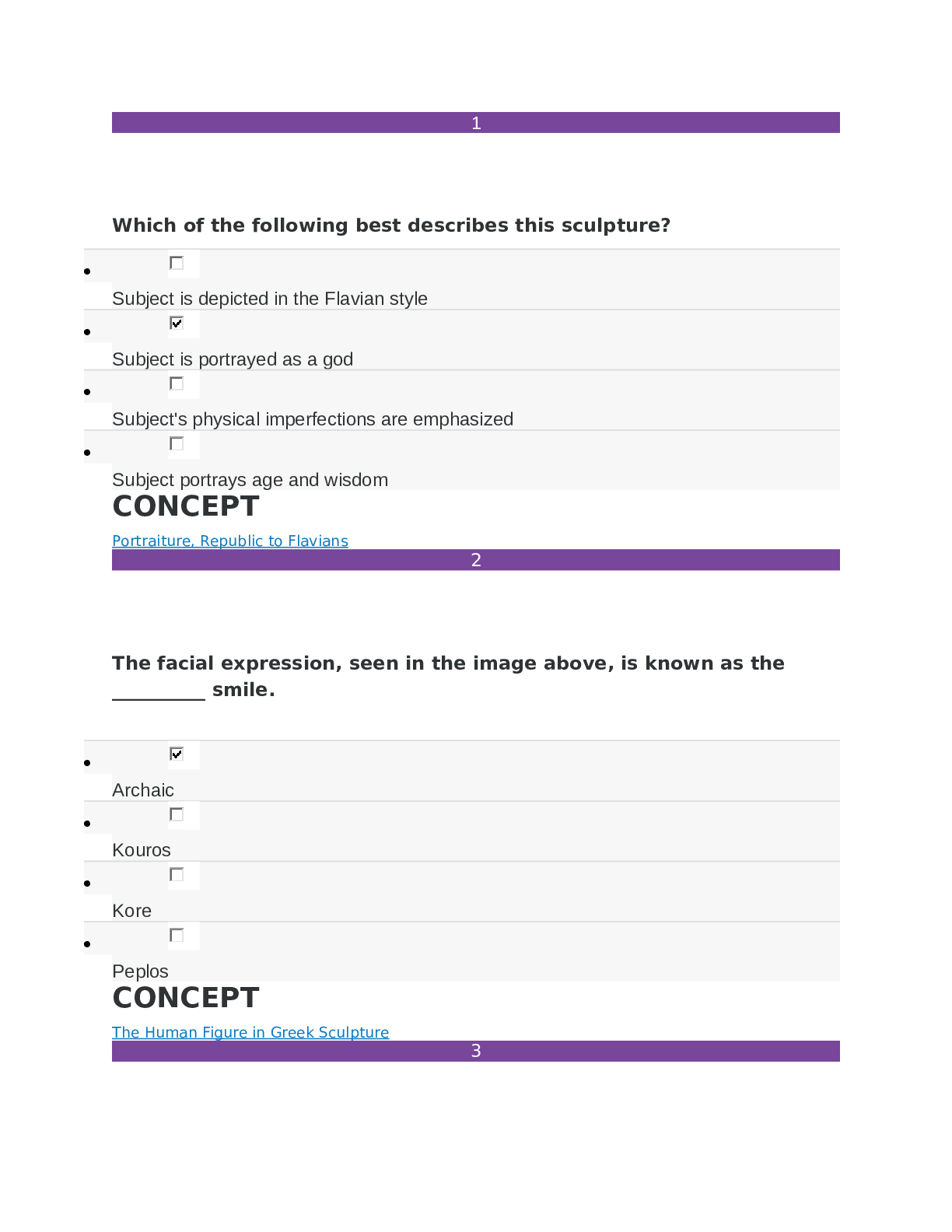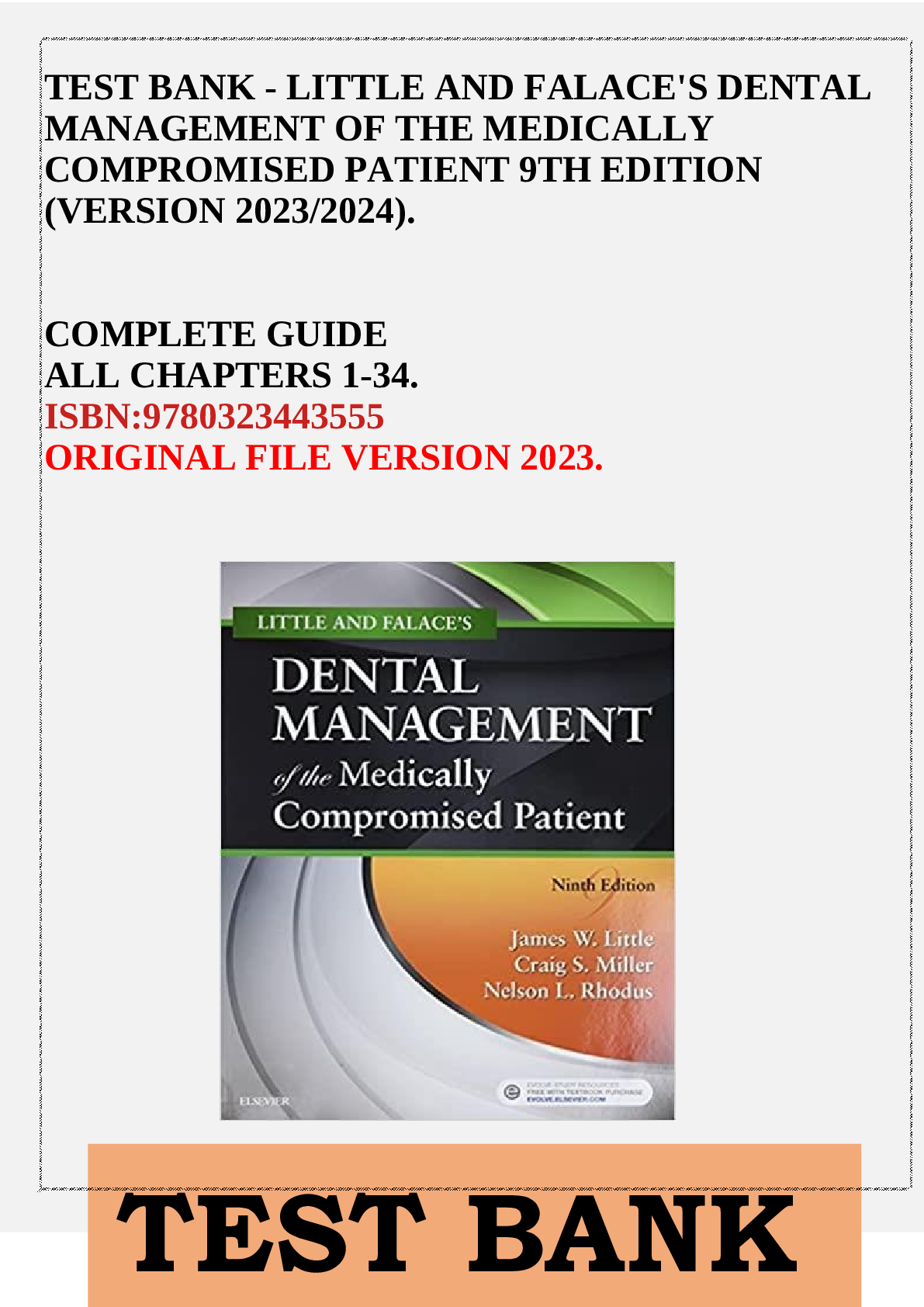Search for
Filter By
Rating
Price in $
Search for Courses, Exams, Books, TEST BANKS, Assignments, notes...
Showing All 0 results
Sort by
*NURSING > EXAM PROCTORED > AHIMA CDIP TRAINING DOMAIN 5 (COMPLIANCE) PRACTICE EXAM Q & A 2024 (All)
*NURSING > EXAM > NURS 6640N MIDTERM EXAM WITH ANSWERS (75/75) ALREADY GRADED A (All)
*NURSING > EXAM PROCTORED > ETHC 445 EXAM PREP VERIFIED PRINCIPLES OF ETHICS COMPLETED 20232024 (All)
*NURSING > TEST BANK > PSYC 2230 Sample/practice exam test bank questions and answers (All)
Computer Science > EXAM > Symantec SCS 250-428 Practice Test V9.02 | Questions with 100% Correct Answers | Updated & Verified (All)
History > CASE STUDY > Sophia Art History 1 Milestone 2 (Solutions)|Art history 1 Unit 2 Milestone Sophia Course (All)
Mathematics > QUESTIONS & ANSWERS > Q&A> Comparing Linear and Exponential Functions _ Using Functions in Models and Decision Making: Regression in Linear and Non Linear Functions. (All)
Construction and The Built Environment > QUESTIONS & ANSWERS > Home Inspection Exam Prep Questions and Answers Graded A+ (All)
Health Care > TEST BANK > LITTLE AND FALACE-S DENTAL MANAGEMENT OF THE MEDICALLY COMPROMISED PATIENT 9TH EDITION! RATED A+ (All)
*NURSING > QUESTIONS & ANSWERS > Certified Postanesthesia Nurse CPAN Exams Forms 1-4, Answered_2022. (All)
